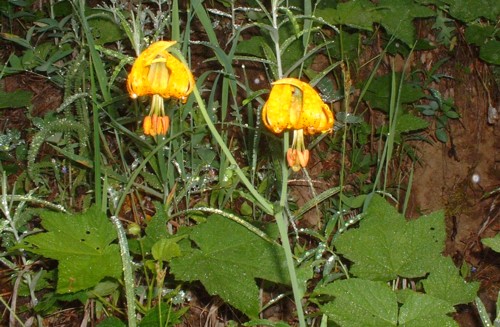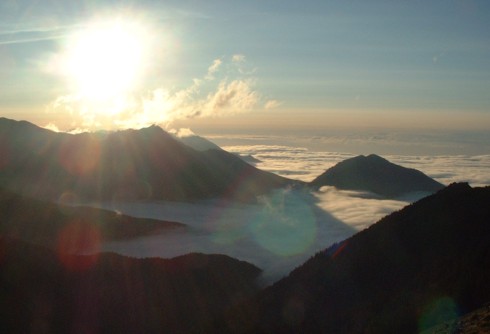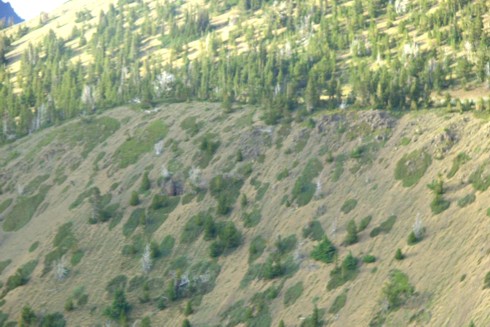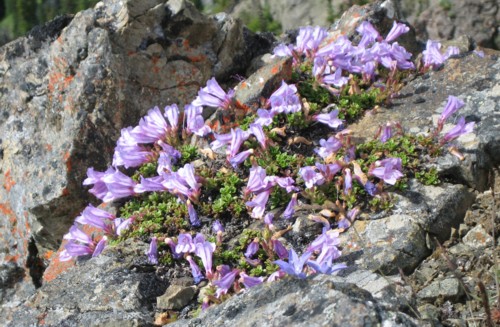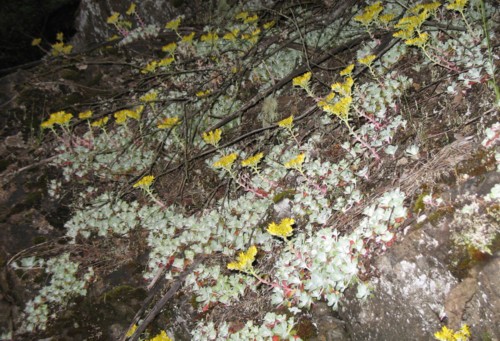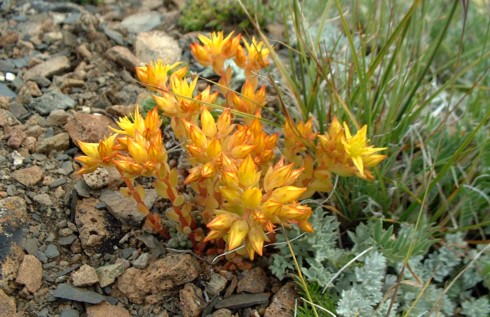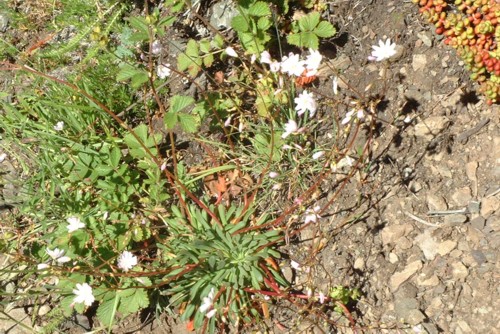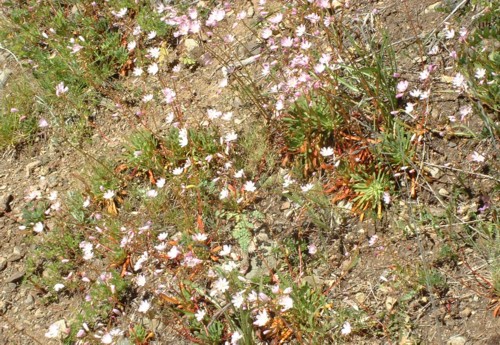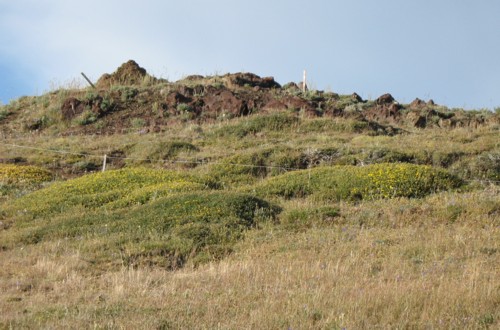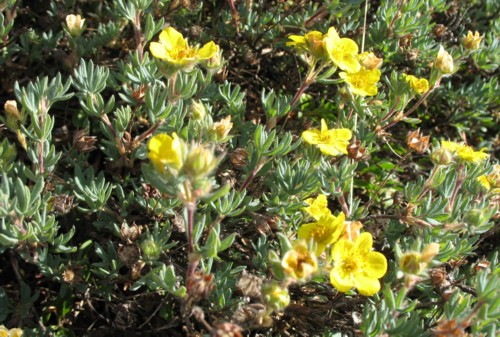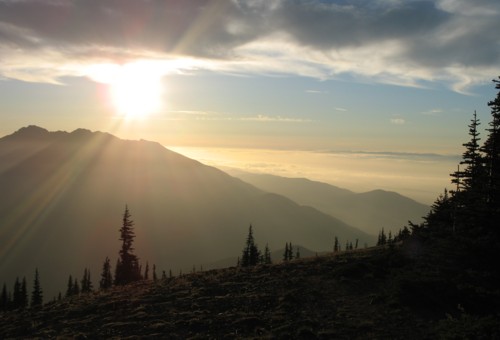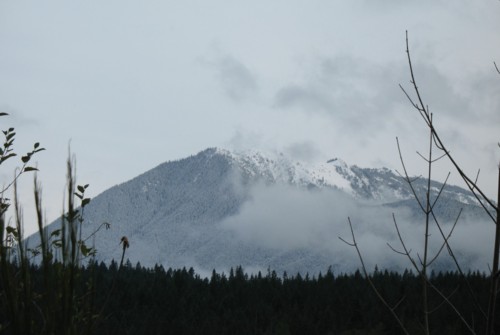|
Summer and Fall 2006 Page 2
As you go a little bit higher into the subalpine zone, you encounter more wildflowers such as this Lilium columbianum on Mt. Townsend.
On this dreary, foggy, misty hike to the top of Mt. Towsend, I was rewared with a splendid sunset view from the top!
What!?! Pruned, mound-shaped plants in the mountains??? But these plants haven't been pruned by some tasteless landscaping service. At high altitudes in the Olympics, the lower branches of alpine fir (Abies lasiocarpa) and other species make denser, more spreading growth where they are protected by a reliable winter blanket of snow. Hence the large green blobs all over the hillsides (some of these may be other species as well).
Many interesting alpine plants can be found in the Olympic high country, including this attractive Eriogonum ovalifolium subsp. nivale on the Tubal-Cain trail.
This showy dwarf Penstemon is probably a form of P. davidsonii.
I really don't know what this is, but it looks cool. Caryophyllaceae? It was growing high in the mountains near Marmot Pass at about 6,500'.
The Olympic Mountains have a number of interesting native succulents. Sedum spathuliflorum is frequently found on rocky cliffs at lower altitudes, such as here near the Mt. Walker summit on US 101. I have also seen it as high as 4,000' on the road to Deer Park.
This is probably Sedum rupicola, on the Tubal-Cain trail at 5,900'.
Sedum divergens can form extensive colonies in large rockfalls, as here on the trail to Marmot Pass.
Lewisia columbiana subsp. rupicola is one of two Lewisia species native to the Olympic Mountains (the other is L. pygmaea), where it grows on gravelly south-facing slopes. Although not impressive in this picture, it is a beautiful garden plant forming many small succulent rosettes with sprays of white early summer flowers.
In some places, it even forms large colonies as here.
Potentilla fruticosa, arguably an overused landscape plant in western Washington, looks much more at home high in the mountains as here near Deer Park summit at 5,800', where it forms broad cushions.
A close up of the flowers of this well-known garden plant. It is really better suited to climates with harsher winters and drier soil, such as much of Eastern Washington.
Veratrum viride, false hellebore, is another native plant that deserves broader use in cultivation. Its large pleated leaves look quite out of place in the alpine meadows of the Olympics. It is even more common in the Cascade Mountains.
Sunset from Deer Park.
The first snow on Deer Park, in early November of 2006. Deer Park was one of the state's first ski areas back in the 1930's. The road was closed, so I couldn't get up there to take some more Arctostaphylos pictures. I'll have to wait until next year.... |
